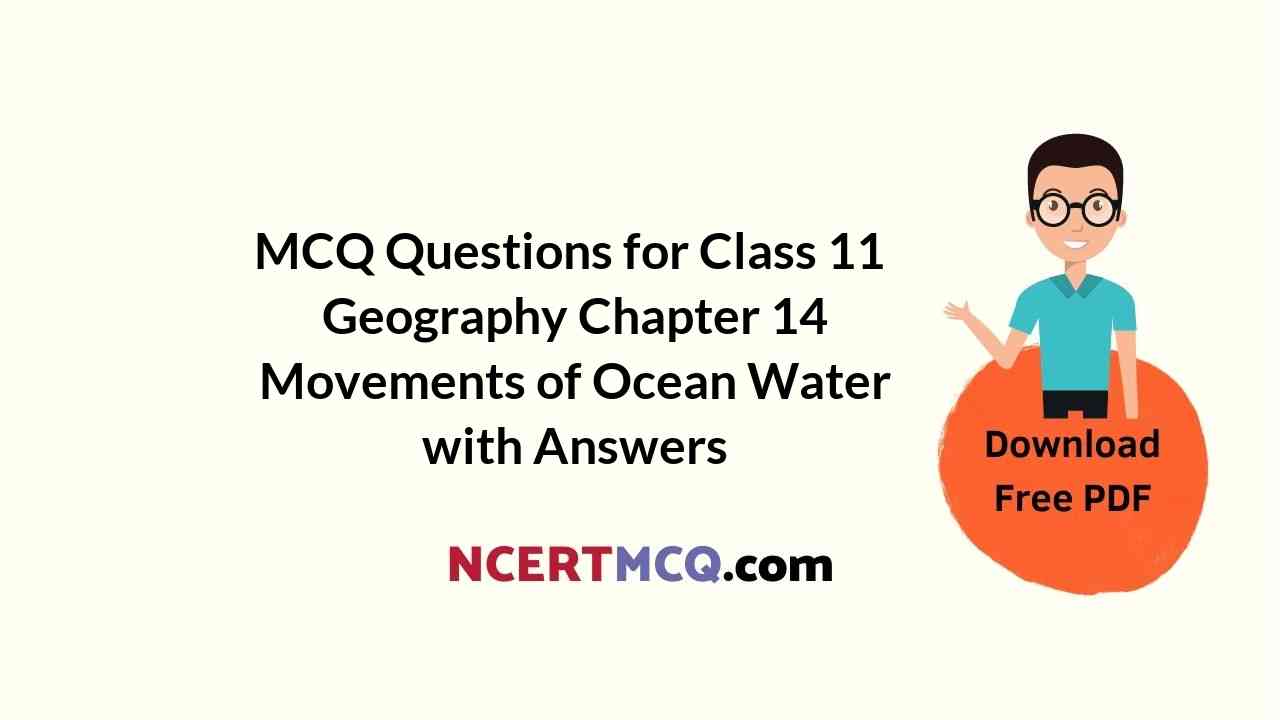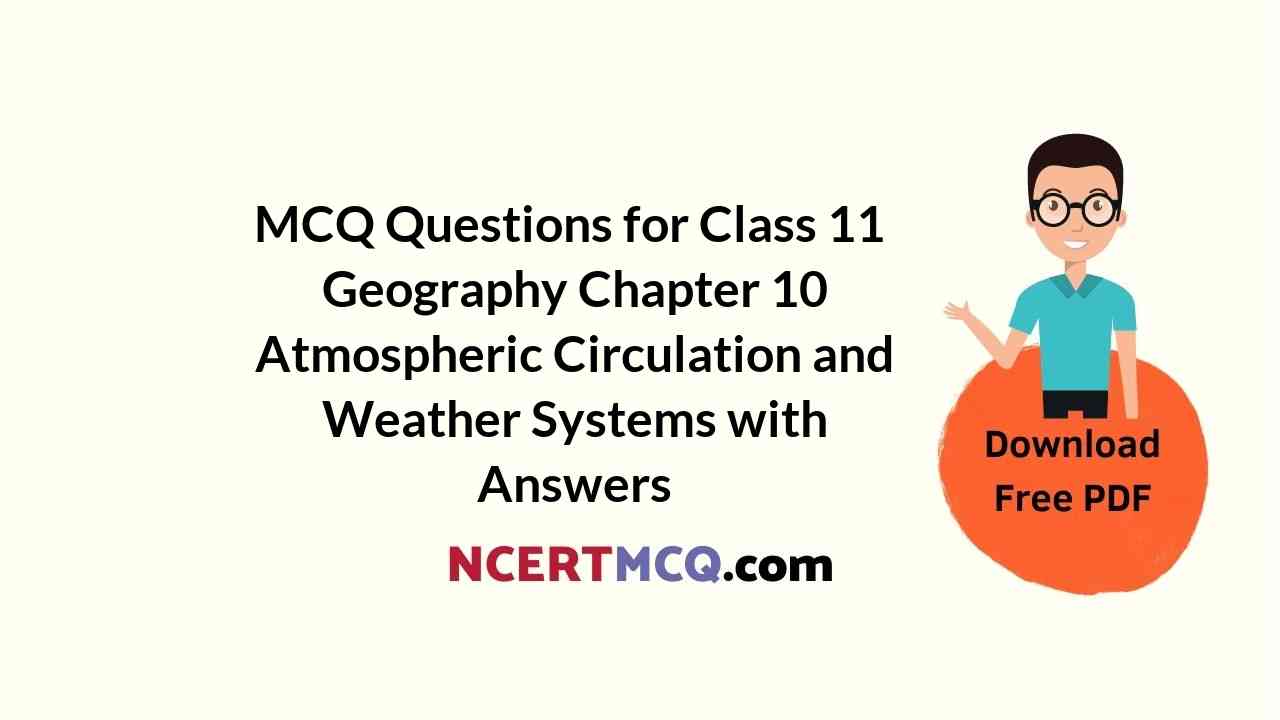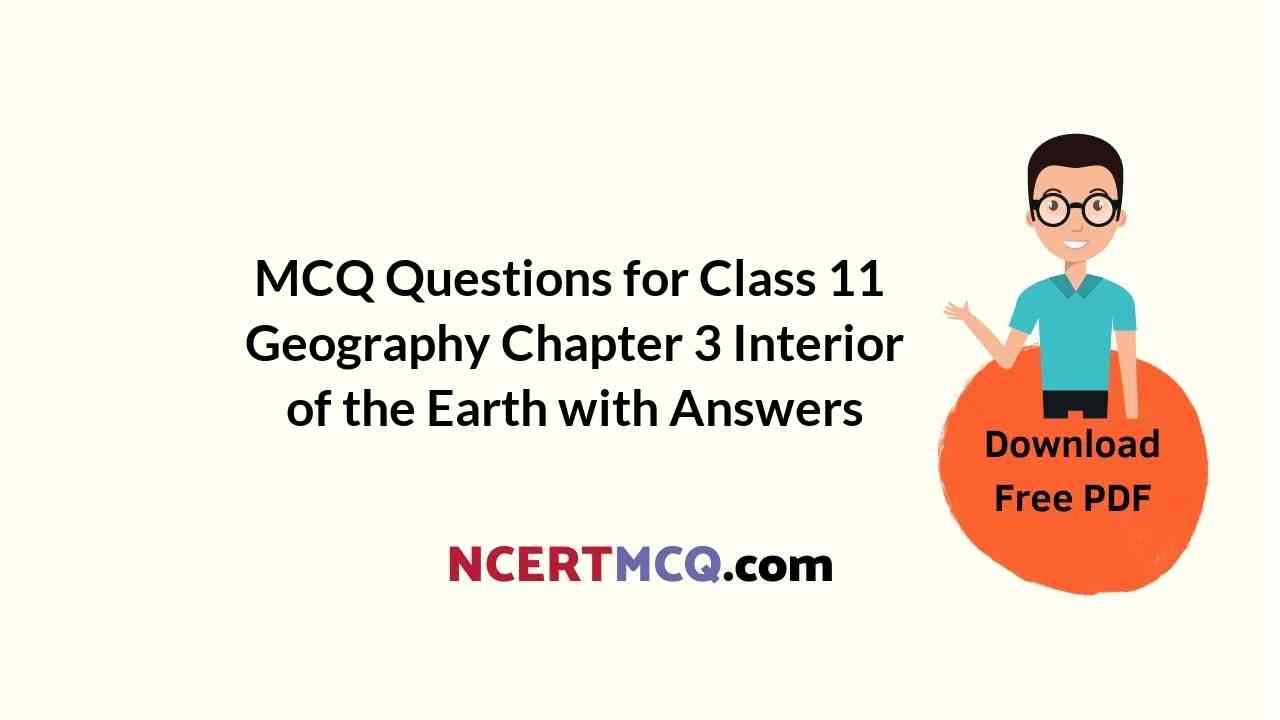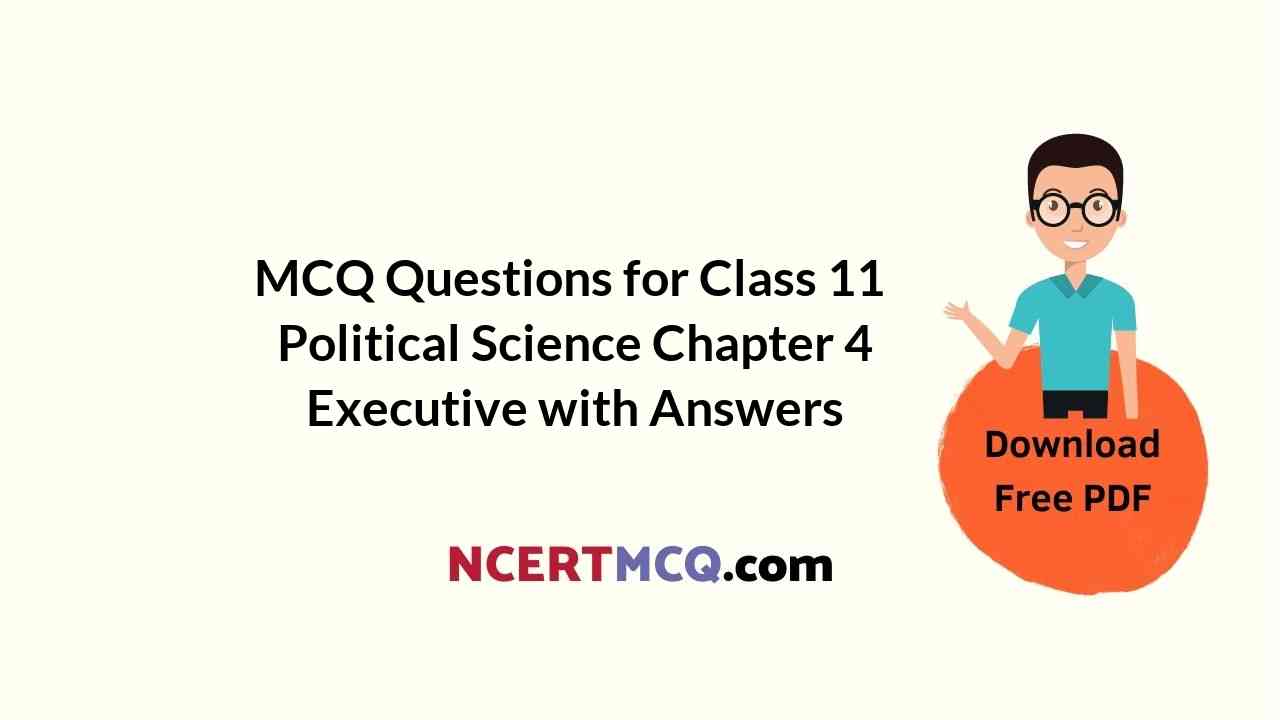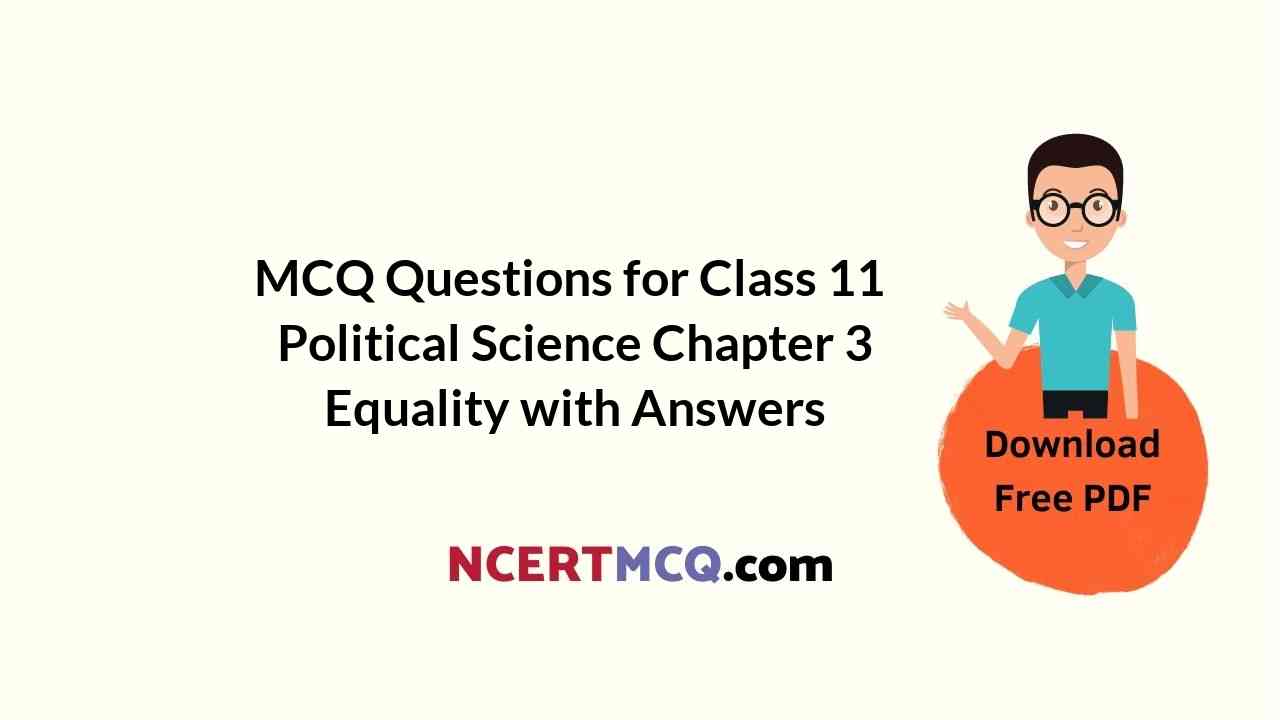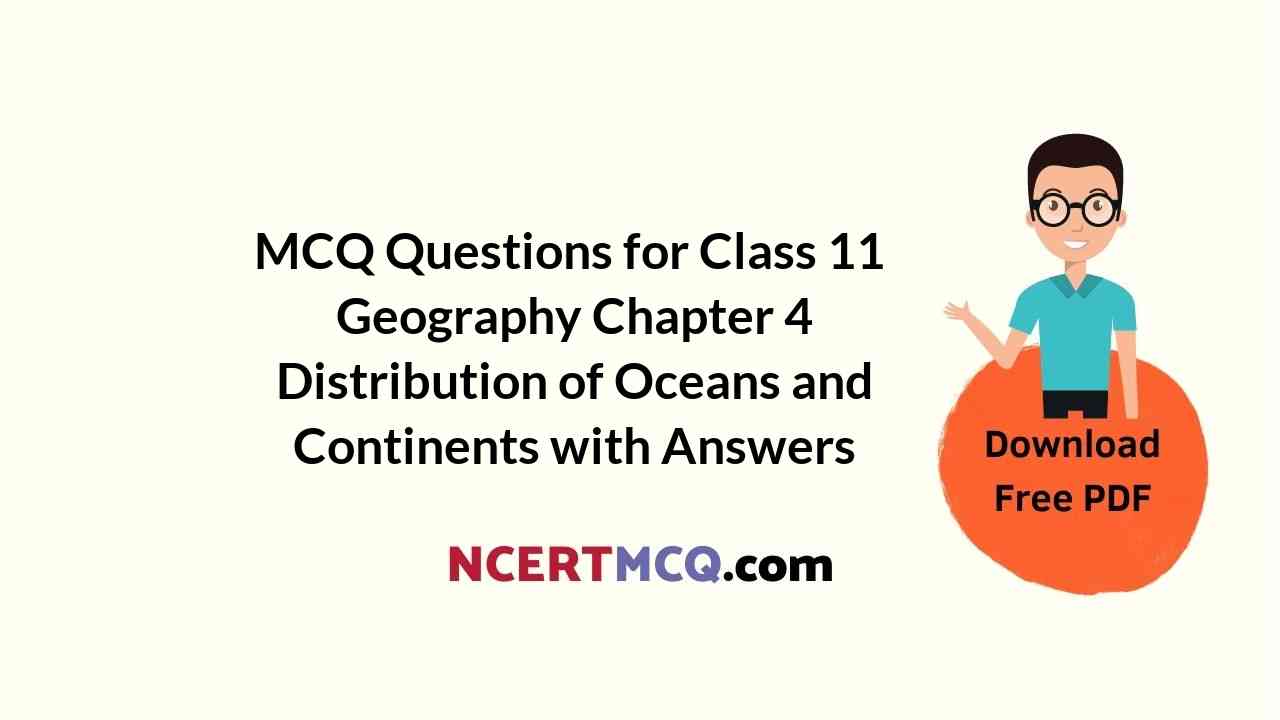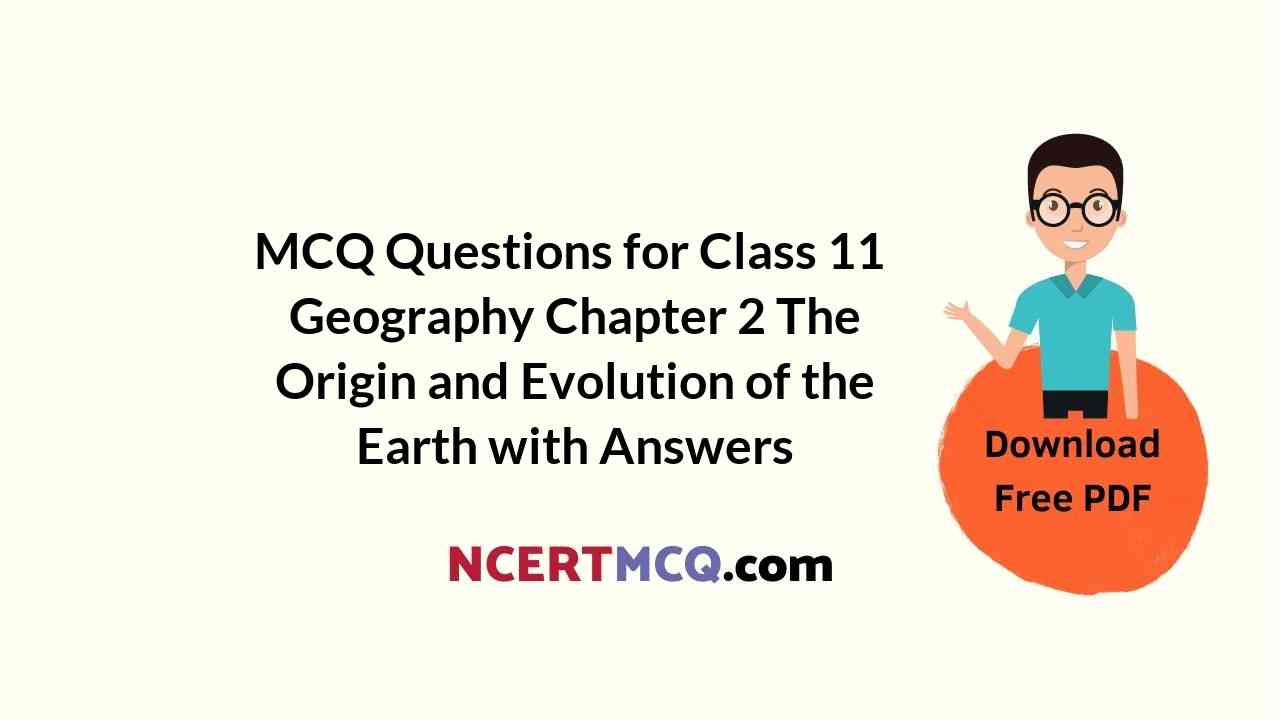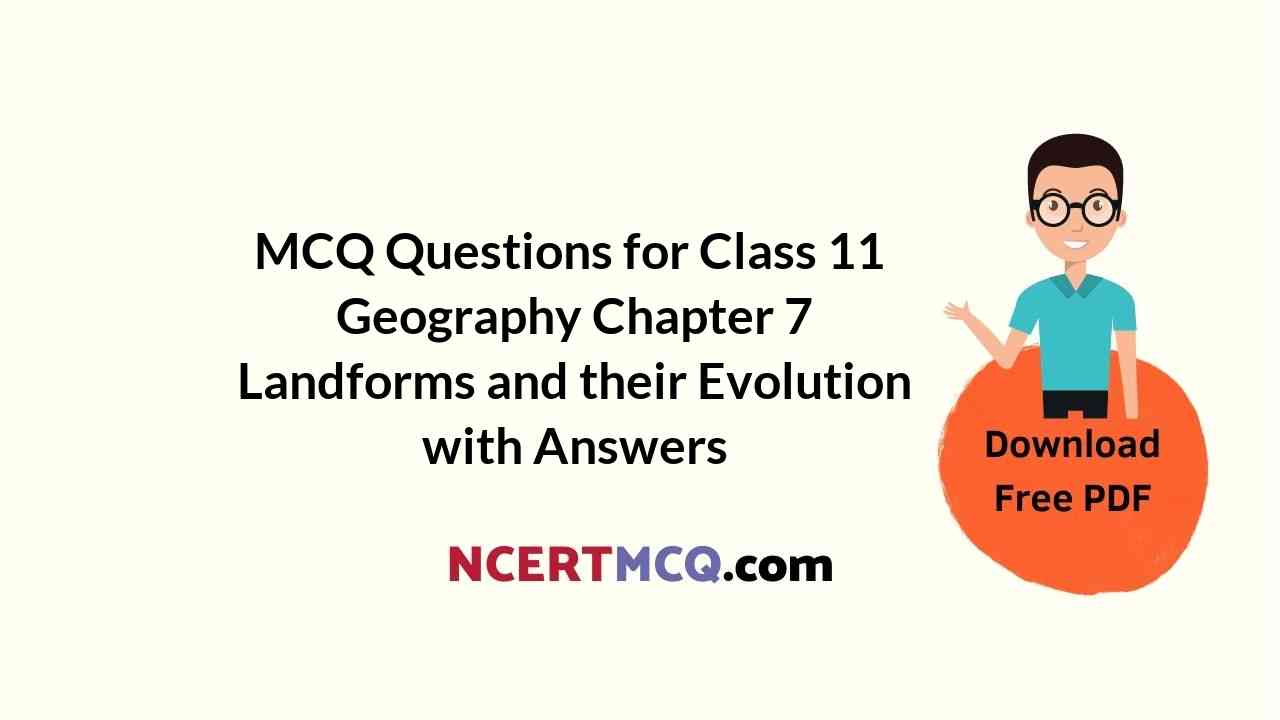Check the below NCERT MCQ Questions for Class 11 Geography Chapter 14 Movements of Ocean Water with Answers Pdf free download. MCQ Questions for Class 11 Geography with Answers were prepared based on the latest exam pattern. We have provided Movements of Ocean Water Class 11 Geography MCQs Questions with Answers to help students understand the concept very well.
Class 11 Geography Chapter 14 Movements of Ocean Water MCQ With Answers
Geography Class 11 Chapter 14 MCQs On Movements of Ocean Water
Question 1.
Seaward movement of water is known as:
(a) Undertow
(b) Ebb
(c) Current
(d) Flood
Answer
Answer: (a) Undertow
Question 2.
The most common tidal pattern, featuring two high tides and two low tides each day is called
(a) Neap tide
(b) Mixed tide
(c) semi-diurnal tide
(d) Diurnal tide
Answer
Answer: (c) Semi-diurnal tide
Question 3.
Huge masses of floating ice are known as:
(a) Current
(b) Ebb
(c) Icebergs
(d) Flood
Answer
Answer: (c) Icebergs
Question 4.
The factor that affects the origin and movement of currents is
(a) river flow
(b) salinity and density of water
(c) tides
(d) prevailing winds
Answer
Answer: (b) salinity and density of water
Question 5.
______causes waves to travel in the ocean and the energy is released on shorelines.
(a) Wind
(b) Land
(c) Water
(d) Soil
Answer
Answer: (a) Wind
Question 6.
Wave amplitude is:
(a) The height of the wave
(b) The breadth of the wave
(c) Half of the wave height
(d) It is the time interval between two successive waves
Answer
Answer: (c) Half of the wave height
Question 7.
The current of the Atlantic ocean is
(a) west wind drift
(b) Gulf stream
(c) Equatorial counter current
(d) Alaska current
Answer
Answer: (b) Gulf stream
Question 8.
The time between the high tide and low tide, when the water level is falling, is called:
(a) drift
(b) nab
(c) ebb
(d) current
Answer
Answer: (c) ebb
Question 9.
The current of the Indian Ocean is
(a) The west wind drift
(b) Labrador
(c) California
(d) Kuroshio
Answer
Answer: (a) The west wind drift
Question 10.
The Thermodynamics of the ocean are:
(a) Currents
(b) Waves
(c) Tides
(d) Salinity
Answer
Answer: (d) Salinity
Question 11.
The time between the low tide and high tide, when the tide is rising, is called:
(a) drift
(b) flood
(c) ebb
(d) current
Answer
Answer: (b) flood
Question 12.
Wave speed is the rate at which the wave moves through the water and is measured in
(a) Knots
(b) Miles
(c) Kilometer
(d) Kilogram
Answer
Answer: (a) Knots
We hope the given NCERT MCQ Questions for Class 11 Geography Chapter 14 Movements of Ocean Water with Answers Pdf free download will help you. If you have any queries regarding CBSE Class 11 Geography Movements of Ocean Water MCQs Multiple Choice Questions with Answers, drop a comment below and we will get back to you soon.
Class 11 Geography with Answers MCQ:
- Geography as a Discipline Class 11 MCQ
- The Origin and Evolution of the Earth Class 11 MCQ
- Interior of the Earth Class 11 MCQ
- Distribution of Oceans and Continents Class 11 MCQ
- Minerals and Rocks Class 11 MCQ
- Geomorphic Processes Class 11 MCQ
- Landforms and their Evolution Class 11 MCQ
- Composition and Structure of Atmosphere Class 11 MCQ
- Solar Radiation, Heat Balance and Temperature Class 11 MCQ
- Atmospheric Circulation and Weather Systems Class 11 MCQ
- Water in the Atmosphere Class 11 MCQ
- World Climate and Climate Change Class 11 MCQ
- Water (Oceans) Class 11 MCQ
- Movements of Ocean Water Class 11 MCQ
- Life on the Earth Class 11 MCQ
- Biodiversity and Conversation Class 11 MCQ
